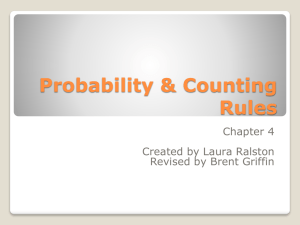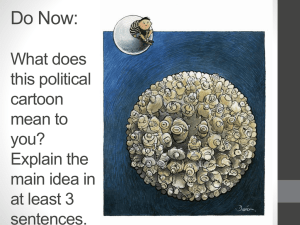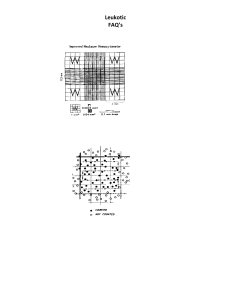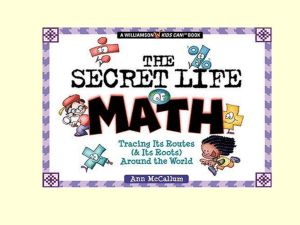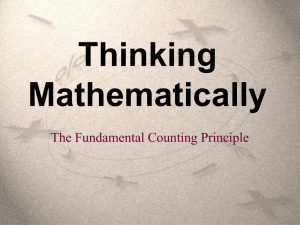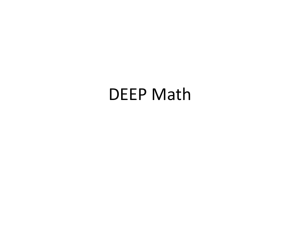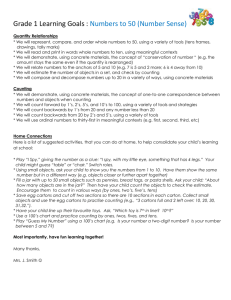2.2 The Fundamental Counting Principle
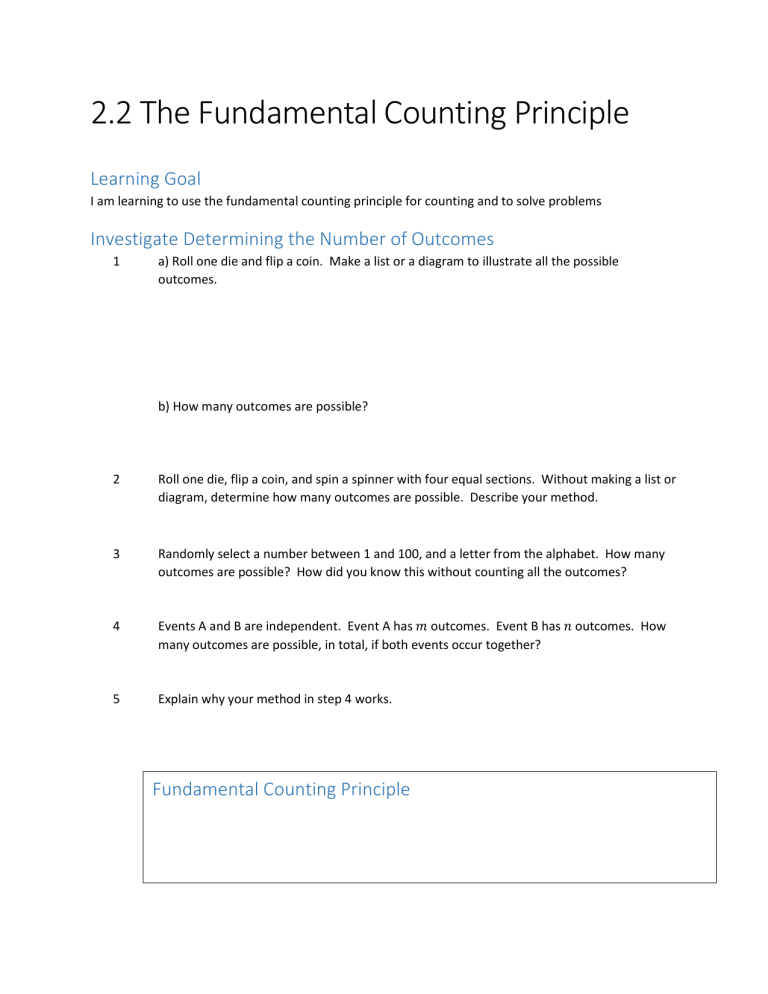
2.2 The Fundamental Counting Principle
Learning Goal
I am learning to use the fundamental counting principle for counting and to solve problems
Investigate Determining the Number of Outcomes
1
2 a) Roll one die and flip a coin. Make a list or a diagram to illustrate all the possible outcomes. b) How many outcomes are possible?
Roll one die, flip a coin, and spin a spinner with four equal sections. Without making a list or diagram, determine how many outcomes are possible. Describe your method.
3 Randomly select a number between 1 and 100, and a letter from the alphabet. How many outcomes are possible? How did you know this without counting all the outcomes?
4 Events A and B are independent. Event A has 𝑚 outcomes. Event B has 𝑛 outcomes. How many outcomes are possible, in total, if both events occur together?
5 Explain why your method in step 4 works.
Fundamental Counting Principle
If one event can occur in 𝑚 ways and a second event can occur in 𝑛 ways, then together they can occur in 𝑚 × 𝑛 ways.
Example 1 Counting Repeated Independent Trials
You flip a fair coin. How many outcomes are possible with a) two flips? b) three flips?
Example 2 Counting Repeated Trials Without Replacement
Two letter tiles are chosen from full alphabet without replacement.
How many possible outcomes are there?
Reflect
R1. Evan reasons that when rolling two 10-sided dice, since each has 10 outcome, there are 10
+ 10 = 20 outcomes in total. Is he right or wrong? Explain.
R2. If a tree diagram has 3 levels with 𝑝 outcomes at the first level, 𝑞 outcomes at the second level and 𝑟 outcomes at the third level, how many outcomes are there in total?
Homework
p. 73 #1 – 10, 13 – 16

